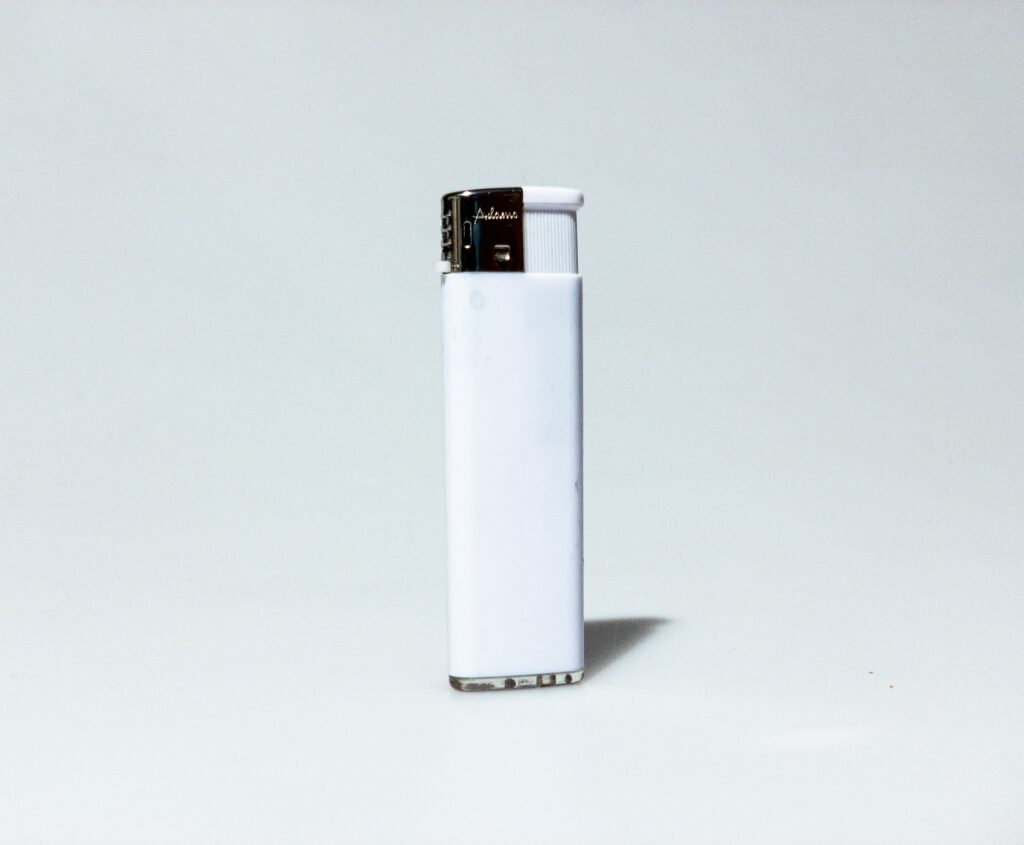We’ve all got lighters laying around the house for lighting our favorite candles and fires and if you’re like me you probably even have a few that no longer work. Some lighters can be refilled with lighter fuel, but for those that cannot, you’re probably wondering what is the proper way to dispose of them.
Lighters can be thrown away. However, it is important to dispose of lighters properly to prevent fires and other hazards. Lighters should be emptied of all fuel and placed in a sealable container before being disposed of in the trash. It is also a good idea to check with your local waste management guidelines to see if there are any specific instructions for disposing of lighters in your area.

How to empty fuel from a lighter
To empty fuel from a lighter, first make sure that the lighter is cool to the touch. Then, hold the lighter upside down and gently press down on the fuel canister until it is empty. You may need to press down on the canister several times to completely empty it of fuel.
It is also a good idea to shake the lighter to help release any remaining fuel. If the lighter is a disposable lighter, you may need to carefully open it up to access the fuel canister. This can be done using a small screwdriver or another tool. Once the fuel canister is exposed, you can follow the same steps as above to empty it of fuel.
It’s important to empty the fuel from a lighter before disposing of it, as fuel can be a fire hazard if it leaks out of the lighter. Once the lighter is empty, it can be safely disposed of in the trash.
How to dispose of lighter fluid
You can empty any excess fluid into a sealed container and take it to your household hazardous waste collection facility. If you do have excess fuel, it is advisable that you just take the fluid with the remaining fuel to the collection point instead of trying to empty it safely yourself.
Remember that it is highly flammable, so you do not want to empty it anywhere inside or near your home.
If you are unable to empty the fuel from the lighter
In a case where you are unable to empty the fuel from a lighter, you will need to treat it as hazardous waste and not throw it away in the trash can. In my area, it is required to bring lighters with any leftover fuel in them to our local household hazardous waste collection site.
It is best to dispose of lighters as soon as possible so that they are not left laying around the house. Always make sure any lighter is kept away from any type of heat source, especially sparks or open flame so that they do not become a fire hazard.
Can you recycle lighters?
You cannot recycle your old lighters even if you have cleaned out the remaining fuel from the tank. Unfortunately, the fuel leaves behind a residue that makes it impossible to process.
You can, however, choose reusable lighters. This means that you can simply refill the fuel and continue to use the same lighter. This helps to cut down on waste in landfills and is actually more cost efficient than continually buying new lighters each time you run out of fuel.
Are matches better for the environment than lighters?
While lighters are made from plastic and metal materials, matches are made from wood and are easily biodegradable. Even if they make it to a landfill as they likely will among your other household trash, they will easily break down fairly quickly.
However, because matches are made from wood, they require the destruction of trees to be produced. Hundreds of thousands of trees are cut down each year to produce matches in the US alone. Think about what this number would be worldwide.
When it comes to the environment, disposable options like lighters and matches are not great options for the environment.
Conclusion
In conclusion, lighters are only meant to be thrown away in the trash if the fuel is completely empty. They are otherwise considered hazardous waste due to their flammable nature and can be harmful to the environment if not disposed of properly.
Ideally, though, lighters should be disposed of at a hazardous waste facility or a local recycling center. By following these guidelines, we can help keep our environment safe and reduce waste.
